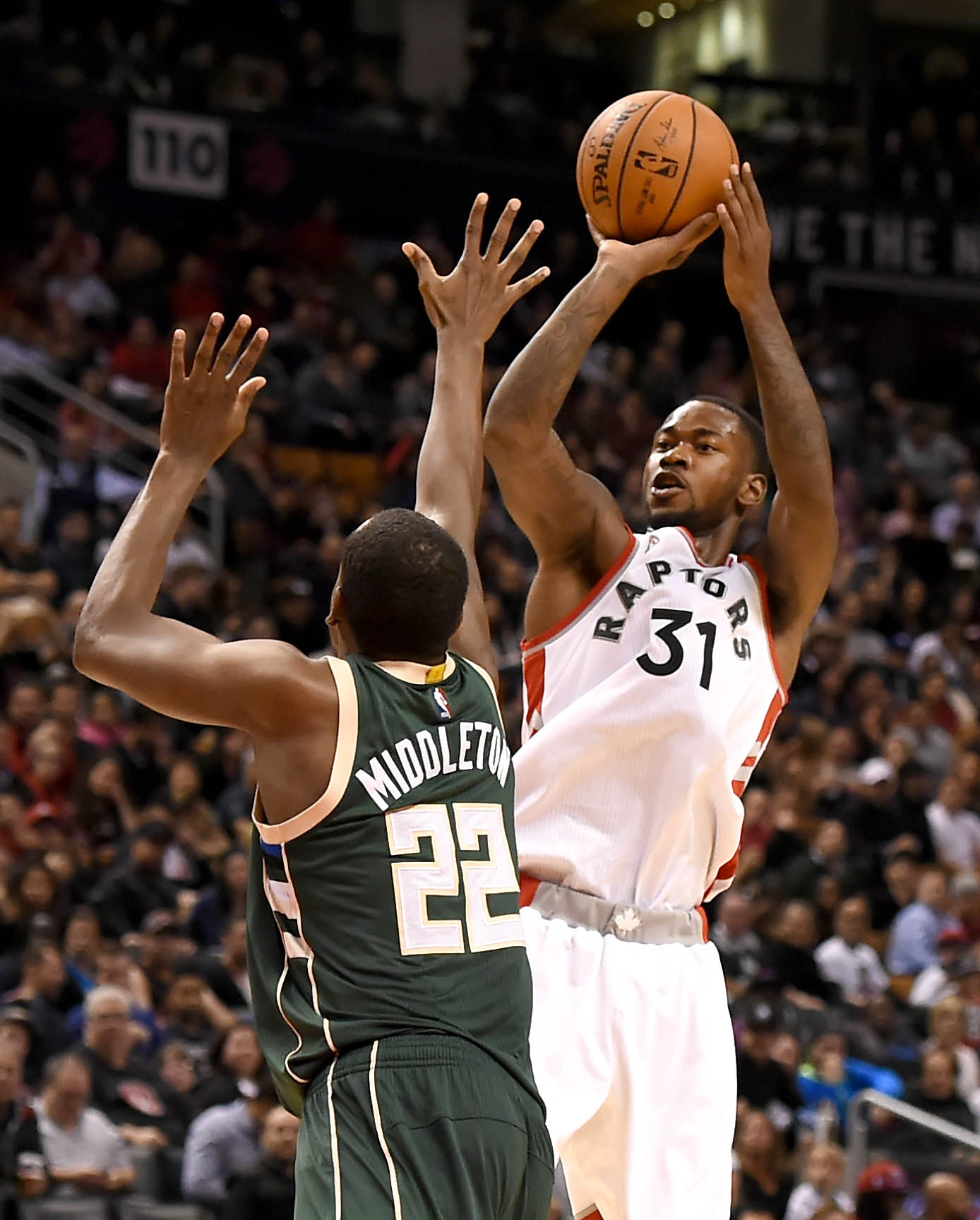During Terrence Ross’ prolonged slump to start the season, I remained adamant that the Toronto Raptors had no choice but to keep letting him work his way through it. Not only does the team lack options on the wing and from long-range, especially with DeMarre Carroll recently sidelined, but Ross has an established track record of being an above-average 3-point shooter. He’s inconsistent defensively and his development in other offensive areas has been uneven, if encouraging, but the one demonstrable skill Ross unquestionably possesses is shooting.
In his first game as a starter in place of Carroll – it’s important to note this is exactly when I re-branded him from Terrence (by way of Terry) to T.J. Ross – he appeared to break out of any existing slump. He shot 8-of-12 overall and 4-of-6 on threes in a 22-point outburst against the Los Angeles Lakers, easily his best game of the season.
In the three games that followed, Ross shot just 1-of-7 from outside but improved his defensive play, an important consideration given his temporary place in the starting lineup. From the offense had flowed his defense, something he was open with me about for a Sportsnet piece I wrote on Dec. 16, and then from his defense flowed more offense – Ross has been red-hot over his last six games, even as he moved back to the reserve role in which he’d struggled previously. All told, since the Lakers game he’s averaged 12.6 points with a 45.2-percent mark from outside and played steady defense (while flashing a nice penchant for ball-hawking as an off-ball defender, a fun development). In his last six, he’s averaging 15.2 points with a 46.9-percent mark from outside.
What’s interesting, though not surprising, is that Ross’ shot-mix hasn’t changed all that much. He’s played more with Kyle Lowry, which certainly helps, and his true-shooting percentage is five percentage points higher with Lowry than without (this holds for almost every Raptor). But his overall shot-mix hasn’t changed a great deal, he’s just knocking down more open jumpers.
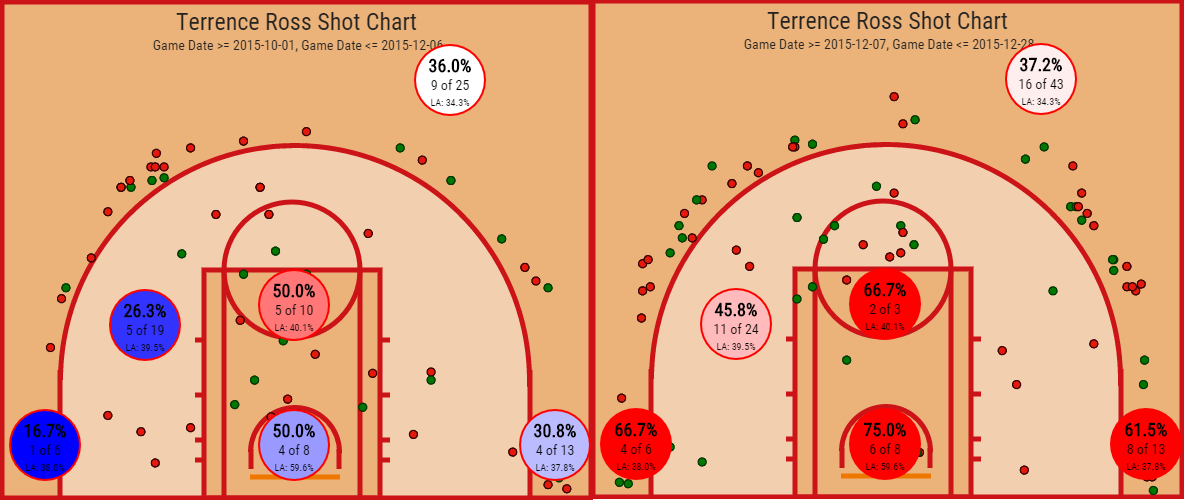
The Raptors have done a slightly better job getting Ross his attempts earlier in the clock and without asking him to dribble, but again, for the most part the biggest change has been the rate at which he cans clean looks.

Ross’ primary function is to provide a 3-point shooting threat from the corner or the wing, helping stretch the floor horizontally for the team’s more ball-dominant players. He’s also been shooting better from 2-point range of late, too, and the Raptors have gotten more creative in getting him involved (and in moving the ball more freely, in general).
That was the case against the Milwaukee Bucks on Saturday, when Ross scored 18 points on 7-of-12 shooting and 4-of-7 from outside, nabbing three steals in the process. When he works inside the arc, it’s usually a touch on a curl or a quick-cut, and two plays in the second quarter stood out as ways to get Ross an easy two in the flow of the offense.
The first is a curl to the elbow out of a side out-of-bounds, one in which the Bucks assume Ross is functioning strictly as a weak-side corner threat. The play starts with Carroll inbounding the ball to Lucas Nogueira up top.
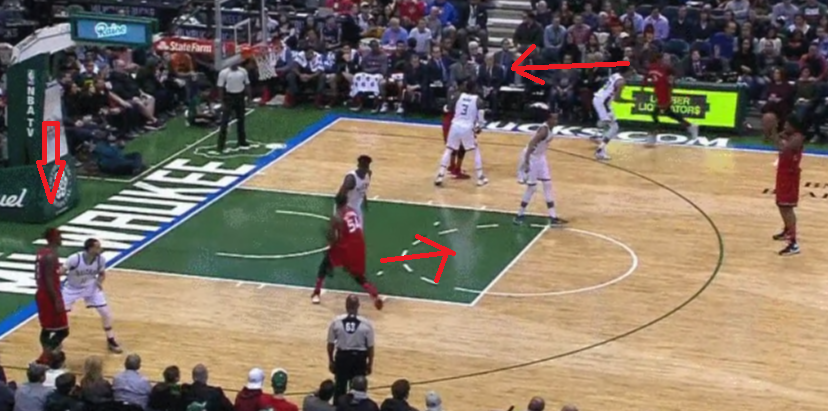
Patterson fakes cutting to the rim and pops to the top to receive a pass while Carroll cuts toward the basket around a Lowry screen. Nogueira’s man is helping way off, potentially snuffing out a pass to Carroll, but Lowry will proceed up top to potentially work into a pick-and-roll with Nogueira.
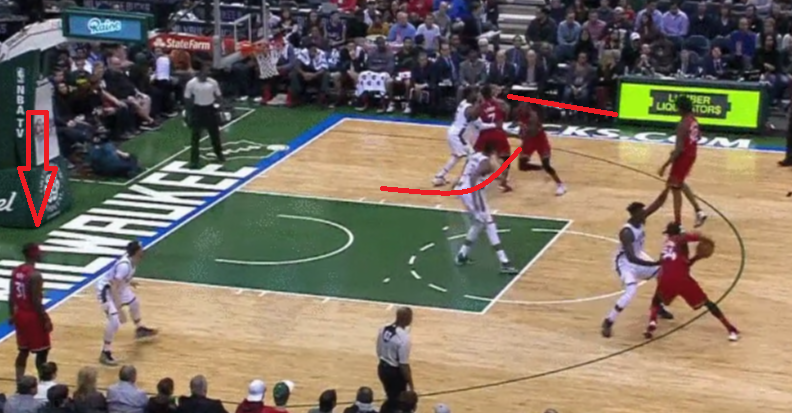
There’s no pass to Carroll, so Lowry uses a Nogueira down-screen to come up top for a ball-reversal. Ross is now once again the weak corner, and Tyler Ennis is yet to stray from him except to provide a touch on Carroll as he completes his route.
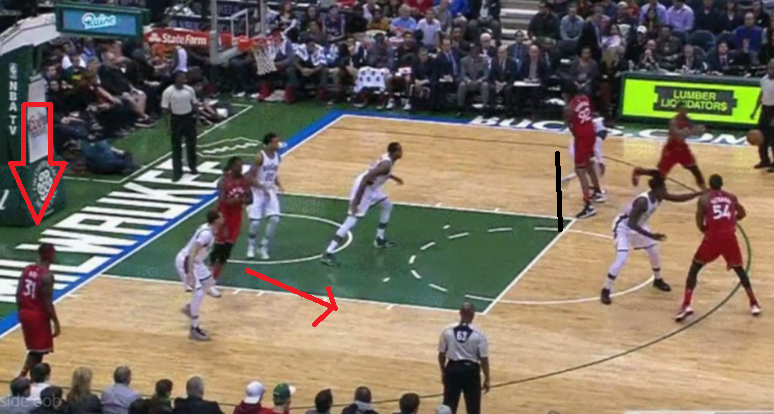
But with Ennis minding Carroll, Carroll instead pulls off his route to screen Ennis. Ross fakes going baseline and instead heads toward the elbow, where Patterson is ready to set a second screen.
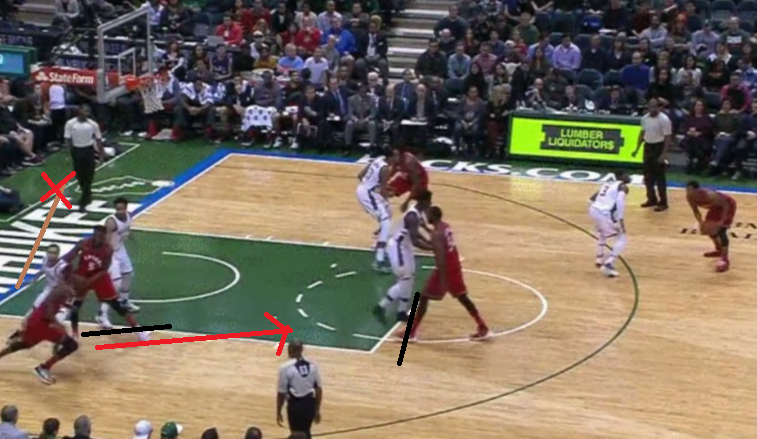
As Ross receives the pass at the top of the circle, Ennis is caught completely and Patterson’s man is dropping back to prevent the catch-and-drive. Surrendering a mid-range two is fine for a defense, but Ross is in rhythm and Ennis is way too late to contest.
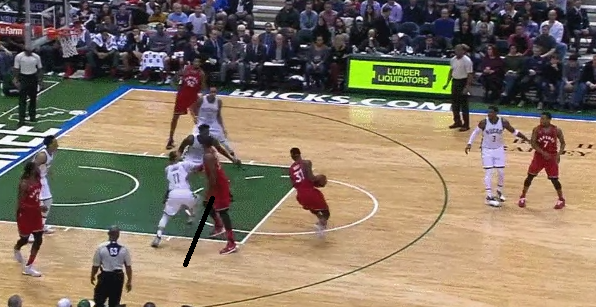
Here it is in full:
[gfy]PoliticalIllinformedDunlin[/gfy]
Four minutes later with different personnel, the Raptors run a similar set, only Lowry pops free for an open three earlier in the action after the Bucks get confused on his screen for Carroll.
[gfy]ThirstyMetallicDungenesscrab[/gfy]
Here’s another quick Ross look, and again, it’s simple. Once again, it comes as a follow-up action to another perimeter player’s cut and a ball-reversal at the top.
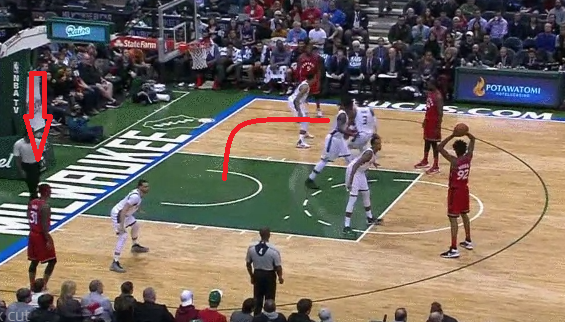
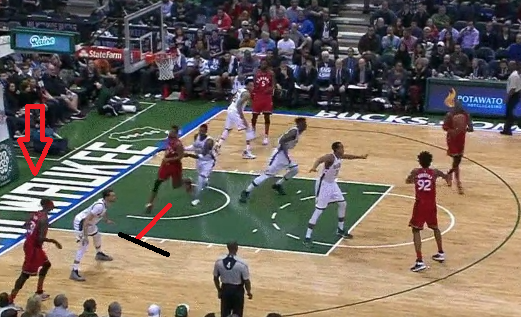
This time, Ross fakes cutting to the middle and heads baseline instead (this play actually preceded the first clip and may have set Ennis up to get caught looking baseline later).
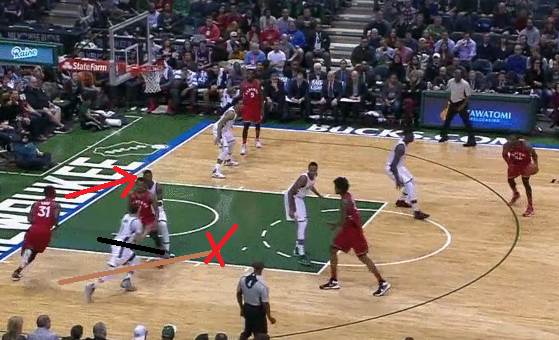
Here’s the whole thing:
[gfy]OnlyFrighteningAsianelephant[/gfy]
We know how Ross gets his threes, primarily as a safety valve when the defense collapses on action elsewhere and a ball-handler (or the power forward – Scola and Patterson have combined for 14 assists on Ross buckets) breaks the pressure by finding him. It’s good to see that head coach Dwane Casey has no issue rewarding his shot-making by calling his number, or by using plays designed for him to get him going when he comes into a game.
As the Raptors return to full health, Ross’ minutes may come down some. Carroll will eventually take his starting gig back, James Johnson will move back to the fringes of the rotation, and Ross will again be the team’s primary wing off the bench, a role in which he was averaging 16.7 minutes before Carroll’s recent injury. Ideally, Ross has earned some of Casey’s trust back and has carved out more minutes moving forward, as Ross playing upwards of 20 minutes allows Casey to more carefully manage the workloads of DeRozan and Carroll. It also gives him the option to roll out three-wing sets to goose spacing and lighten the load on Lowry and Cory Joseph, who have made for excellent small-ball groupings but are being worked heavily.
It’s going to take a while before Ross earns the trust of the fan base back, if he ever can. The last four seasons have been so up-and-down that he may have worn out his rope with some. But as eye-popping as the salary figure was, there were always (perhaps tenuous) basketball reasons to accompany the market conditions that led to Ross’ three-year extension at the start of the year. The franchise bet on him being this kind of player, and the Raptors will need him to do just that to reach their full potential.
Don’t let down your guard completely, because you can never go Full Terrence. But we’ve probably seen enough, both in how the Raptors use him and how he responds, to slowly begin trusting Ross as a functional bench piece moving forward.

